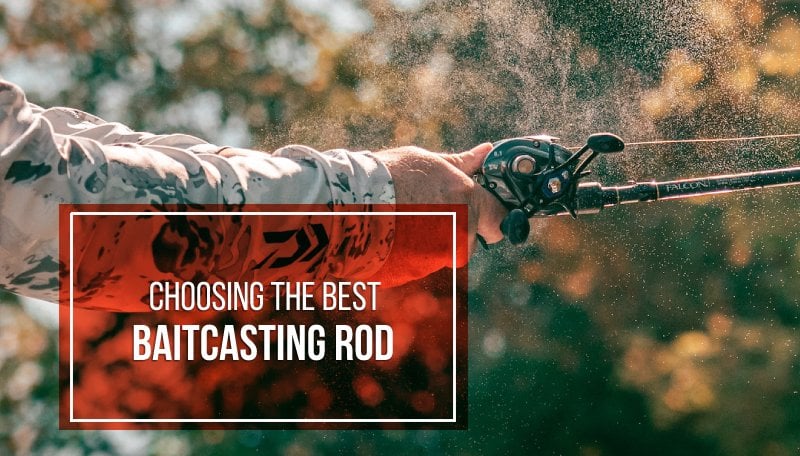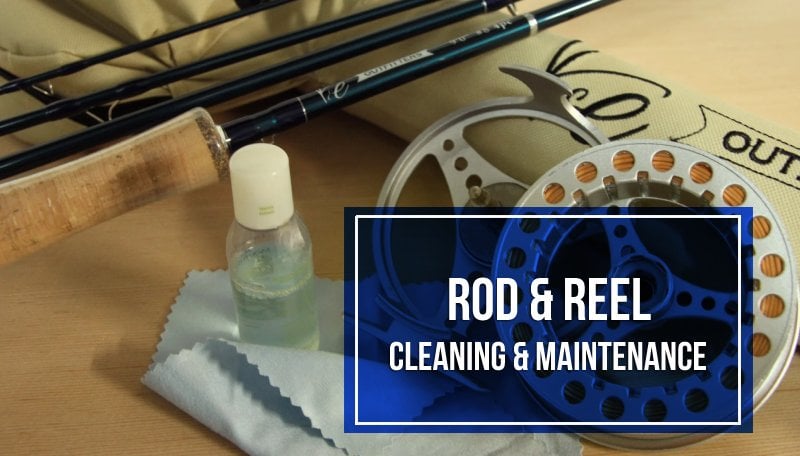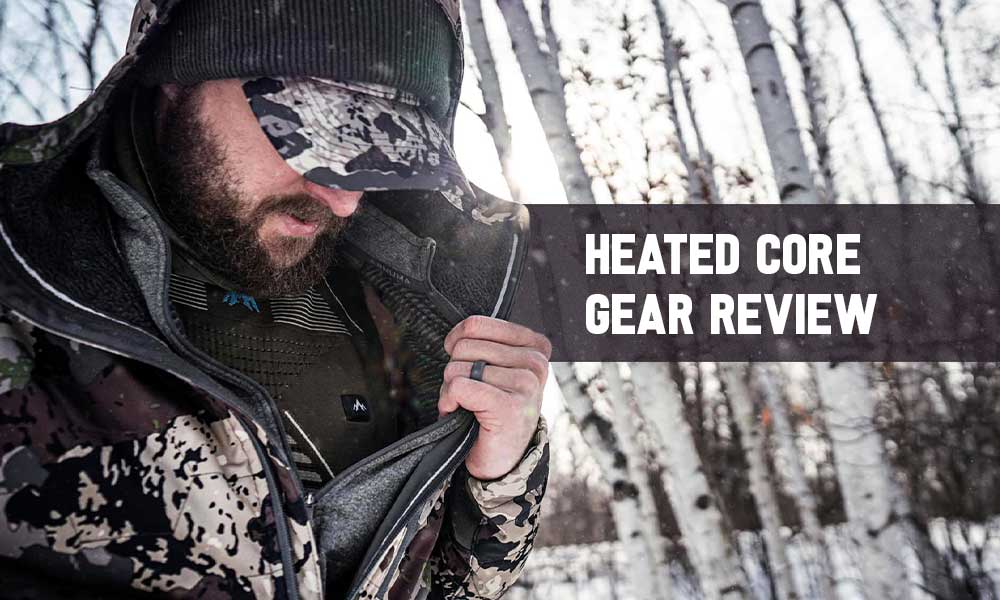In this article, we’ll cover everything from understanding what a baitcasting rod is to discussing factors to consider when making your choice and even sharing some expert picks for different scenarios. Let’s dive right in!
Table of Contents
What is a Baitcasting Rod?
Factors to Consider When Choosing a Casting Rod
Key Features to Look for in a Baitcasting Rod
Final Words
So, What is a Baitcasting Rod?
Well, a baitcasting rod (or simply a casting rod) is specifically designed to work with a baitcasting reel mounted on the top side of the rod. Сompared to spinning rods, baitcasting rods feature smaller guides located on the top side of the rod. Such an unusual design causes the line to put pressure down on the guides and the blank instead of pulling on the guides like with a spinning rod design.
Besides, baitcasting reels release the line in a tighter pattern, allowing for a more fluid casting action and reduced drag. Additionally, with the reel positioned on top, your thumb can actively participate in controlling the release of the line by gently pressing on the spool. This extra level of control is quite beneficial when aiming for a specific spot.
So, generally, casting rods are more accurate, provide more control, and hold on better when fighting a heavy fish.
Casting rods do present a bit of a learning curve, especially for novices. If you’ve ever spent time untangling a mess of fishing line after an unsuccessful cast, you’re familiar with the challenges. But don’t let this discourage you! With determination and practice, you’ll soon master the art of casting.
Factors to Consider When Choosing a Baitcasting Rod
Now, here are some key factors to consider when choosing a baitcaster rod that suits your needs:
Target Species (Rod Power)
Each fish species has its own unique set of characteristics, such as size, weight, and fighting style, which will influence the type of rod you’ll need. Let’s take a closer look at some common target species and how they affect your choice of baitcasting rod:
- Bass: Arguably one of the most popular targets for anglers, bass are known for their aggressive strikes and acrobatic fights. For largemouth bass fishing, you want a baitcasting rod with a medium to heavy power rating to ensure enough backbone to handle their spirited battles.
- Walleye: These elusive fish are often found in deeper waters and require a sensitive rod to detect their subtle bites. A medium-light to medium power rod will provide the sensitivity needed to feel those light nibbles and the power to reel them in.
- Trout: These beautiful fish are found in rivers and streams, requiring delicate presentations and finesse techniques. A light to medium-light power rod with a moderate action will give you the ability to make longer casts and delicate presentations. Light power baitcasting fishing rods are also great for catching crappie, panfish, and perch.
- Catfish: These bottom-dwelling giants can put up quite a fight, so you’ll need a rod that can handle their strength. A medium-heavy to heavy power rod will provide the backbone needed to haul in these whiskered warriors.
Fishing Technique (Rod Action)
Your preferred fishing technique (or simply the lure type you’re using) also plays a significant role in determining the best baitcasting rod:
- Bottom Lures: Sensitivity is key when using bottom contact lures like jigs. You want a rod with a fast or extra-fast action that allows you to feel when the fish is biting down on the lure and make a quick hookset.
- Moving Lures: When using moving baits like crankbaits, spinnerbaits, or swimbaits, a moderate-fast or fast action rod will give you the versatility to work the lure effectively while still providing enough flexibility to absorb the shock of sudden strikes.
- Natural Baits: If you prefer using natural baits, a moderate-fast action rod will provide the right balance between sensitivity and flexibility. This action will allow you to detect bites while giving the fish enough time to fully take the bait before you set the hook.
Key Features to Look for in a Baitcasting Rod
Blank Material
The material used for the rod blank can significantly impact its performance. Common materials include graphite, fiberglass, and composite blends.
Graphite
Pros:
- Lightweight: Graphite rods are lighter than their fiberglass counterparts, making them a breeze to handle for extended periods.
- Sensitivity: Graphite rods boast excellent sensitivity, allowing you to detect even the slightest nibbles.
- Faster action: Graphite rods tend to have a faster action, perfect for techniques that require quick hooksets and ninja-like control.
Cons:
- Brittleness: Graphite rods can be more prone to breakage due to their stiffness.
Fiberglass
Pros:
- Durability: Fiberglass rods are known for their toughness and ability to withstand abuse.
- Flexibility: With a slower action, fiberglass rods provide more flexibility, allowing you to cast lures with ease and absorb aggressive fish strikes without snapping.
- Lower cost: Fiberglass rods are generally more affordable than graphite rods.
Cons:
- Heavier: Fiberglass rods are typically heavier than graphite rods, which could lead to fatigue.
Composite
Pros:
- Best of both worlds: Composite rods combine the benefits of both graphite and fiberglass, offering a balance between sensitivity and durability.
- Versatility: These rods can be tailored to suit various fishing techniques, making them a popular choice for anglers who enjoy tackling different species and environments.
Cons:
- Heavier than pure graphite: While composite rods are lighter than fiberglass rods, they may still be heavier than pure graphite options.
Grip
Here, two main factors come into play: grip style and grip material.
Grip Styles:
- Split grip: A split grip has a gap between the handle and the butt of the rod, which reduces the overall weight and provides a more balanced feel. This style is popular among anglers who value sensitivity and precision, as it allows for a better connection with the rod blank.
- Full grip: A full grip extends continuously from the reel seat to the butt of the rod, providing a traditional look and feel. This style offers more surface area for gripping, which can be beneficial when fighting larger fish.
Grip Materials:
- Cork: Cork grips have been a favorite among anglers for ages, and for good reason. They’re lightweight, comfortable, and provide a classic, natural feel. Cork also has excellent grip properties, even when wet. On the downside, cork can be prone to chipping and wear over time, especially if not well-maintained.
- EVA: EVA foam grips are a modern alternative to cork, offering excellent durability and resistance to wear. They’re soft and comfortable and maintain a good grip even when wet. The downside? EVA foam may lack the same level of sensitivity as cork, but many anglers find it a worthy trade-off for its longevity and ease of maintenance.
Rod Length
The length of your casting rod influences casting distance and accuracy, as well as the leverage you have when fighting a fish. Shorter rods (6-7 feet) are great for making precise casts in tight spaces, while longer rods (8 feet and longer) provide increased casting distance and better leverage over larger fish.
Line Guides
Line guides impact casting performance. While plastic guides are more budget-friendly, ceramic guides offer top quality and are ideal for use with braided or super lines. RECOIL® nickel-titanium guides take things to new heights, providing durability, corrosion resistance, and increased sensitivity. Other excellent options include Fuji’s® Concept guide with its Alconite ring material for a smoother, lighter-weight experience.
Final Words
So, friends, to make the best choice, keep in mind factors such as blank material, grip style and material, rod length, and line guides. By understanding how these elements impact your fishing technique and comfort, you’ll be better equipped to find the ideal rod.
FAQ
What is a casting rod?
A casting rod is a type of fishing rod designed specifically for use with casting reels, such as baitcasting and spincasting reels. It features line guides on the top side of the rod blank and offers greater accuracy, control, and strength.
What is a baitcasting reel?
A baitcasting reel is a type of fishing reel mounted above the rod, featuring a revolving spool and a handle-driven mechanism to retrieve the line. Baitcasting reels provide improved casting accuracy, control, and the ability to handle heavier lines and lures, making them popular among big-fish anglers.
What baitcasting rod is the best for bass fishing?
Generally, a medium to medium-heavy power rod with a fast action, and a length between 6’6″ and 7’6″ works well for most bass fishing techniques.











